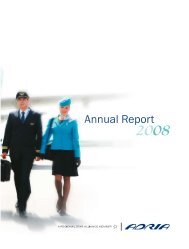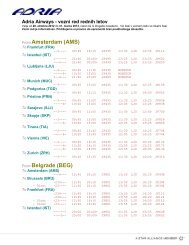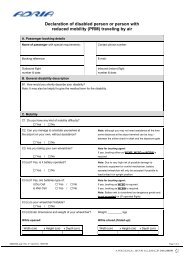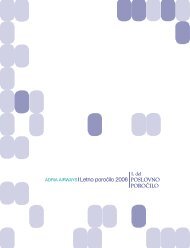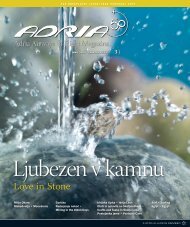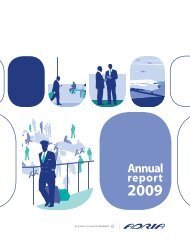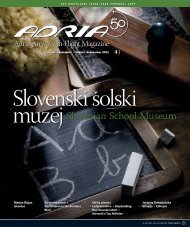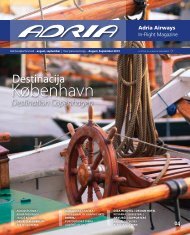Create successful ePaper yourself
Turn your PDF publications into a flip-book with our unique Google optimized e-Paper software.
ADRIA PASSENGER<br />
Fotografija: Bobo<br />
Initially, ski flights were somewhat overshadowed by ski jumping,<br />
but they soon came into their own as an equally important<br />
discipline and a prestigious sport in the eyes of the viewers.<br />
At FIS, they were not necessarily impressed by your<br />
ideas – it could even be said that you were usually in<br />
conflict with them. Why is that<br />
I don't like to brag, but I can safely say that Planica has always<br />
been a step or two ahead of the times. As far as FIS was concerned,<br />
our rate of development was too rapid. They were concerned<br />
about the safety of ski jumpers. Obviously, safety should<br />
always come first, but most of the time FIS really had no idea<br />
about what it actually takes for a safe ski flight. Despite what you<br />
might think, safety actually comes from length – it is much safer<br />
to land after a long flight rather than a short one.<br />
Another of your innovative ideas was to have computer-guided<br />
balancing of lateral winds on a ski flying hill.<br />
How far along are you with this concept<br />
I was hoping that the system would be tested at the 2011 Winter<br />
Universiade in Erzurum, Turkey. We designed the ski jump tower<br />
that was built there. The designs for a computer-guided screen<br />
that would balance lateral winds and increase the participants'<br />
safety were developed at the Jožef Stefan Institute in Ljubljana.<br />
There are several reasons why the concept has not been realised<br />
yet, but I hope that it will eventually become an important factor<br />
in the future development of ski jumping.<br />
You and your team were also involved in the reconstruction<br />
of the Vikersund hill where Johan Evensen set<br />
the current world record – 246.5m – in 2011, taking it<br />
away from Planica after several decades.<br />
I was surprised by the Vikersund record. It turned out that temperature<br />
plays an important part in longer flights. It was very<br />
cold there, 20 or 25°C below zero; when you factor in the low<br />
altitude, the combination makes for ideal air density and lift.<br />
But this is a good thing – it gives Planica some competition.<br />
Ever since Bloudek's time, Planica has<br />
been a testing ground where we tried<br />
out new ideas, learnt from our mistakes<br />
and gradually made progress. Of<br />
course, safety always came first.<br />
They had a bit of luck in Vikersund because FIS had just adopted<br />
new rules, which meant that the K point on their tower was<br />
placed at 195m, allowing for much longer jumps than before.<br />
My team and I played a part in this change of FIS rules, because<br />
we wanted to expand the Planica hill. The new profile with the K<br />
point situated at 200m has been approved and our hope is that<br />
the reconstructed hill will be ready for competitions in 2014.<br />
What lengths will it be possible to achieve there<br />
Much longer than in the past, I think. Perhaps even up to 270m<br />
in the future.<br />
31



